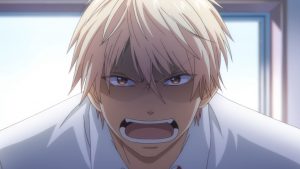 This spring is sort of an unusual season for me in that to a large extent it hinges around series based on manga I’m intimately familiar with – Fruits Basket, Mix, and of course Kono Oto Tomare!. Our judgments about such adaptations can be suspect, so I try to be as diligent as I can in policing myself. It can cut both ways, though both of them stem from too much loyalty to the source material. We can be overly critical of any changes, or we can be knee-jerk defenders against any criticism. The truth is that no adaptation can be perfect, though some are great. And no adaptation is without merit altogether – though some are legit pretty bad.
This spring is sort of an unusual season for me in that to a large extent it hinges around series based on manga I’m intimately familiar with – Fruits Basket, Mix, and of course Kono Oto Tomare!. Our judgments about such adaptations can be suspect, so I try to be as diligent as I can in policing myself. It can cut both ways, though both of them stem from too much loyalty to the source material. We can be overly critical of any changes, or we can be knee-jerk defenders against any criticism. The truth is that no adaptation can be perfect, though some are great. And no adaptation is without merit altogether – though some are legit pretty bad.
 That brings me around to the reaction the Kono Oto’s first episode, which was rather mixed. As a fan of the manga (albeit one who recognizes its limitations) I personally thought the premiere was pretty on-point with the first chapter of the manga, which was all it adapted. But one criticism I saw frequently really puzzled me, and I don’t think it’s reflexive favoritism on my part – many viewers ripped the premiere for not having any koto playing. Setting aside the fact that this is factually wrong (there was just a bit), it struck me as both odd and unfair to criticize a series of 15 volumes and counting for not having koto performance in the very first chapter. It doesn’t make sense to me, to be frank – and I don’t think it reflects (as I saw suggested) a lack of passion for the topic on the part of the mangaka.
That brings me around to the reaction the Kono Oto’s first episode, which was rather mixed. As a fan of the manga (albeit one who recognizes its limitations) I personally thought the premiere was pretty on-point with the first chapter of the manga, which was all it adapted. But one criticism I saw frequently really puzzled me, and I don’t think it’s reflexive favoritism on my part – many viewers ripped the premiere for not having any koto playing. Setting aside the fact that this is factually wrong (there was just a bit), it struck me as both odd and unfair to criticize a series of 15 volumes and counting for not having koto performance in the very first chapter. It doesn’t make sense to me, to be frank – and I don’t think it reflects (as I saw suggested) a lack of passion for the topic on the part of the mangaka.
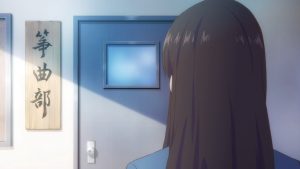 On the other hand, if one was hoping for a lavish, opulent visual tapestry of the sort we saw in Chihayafuru or Boku no Hero Academia, that we didn’t get. Platinum Vision is not Bones or vintage Madhouse, and the production side of Kono Oto Tomare! is more modest. It’s also fair to say, I think, that (some would say in typical shounen fashion) this series is a bit of a slow build in its native manga form, and that transferred over to the anime. This series’ strength is in numbers, cast-wise – and we really only met about 2.5 major characters in the premiere. And the performance side of it has to, by nature of the premise, start from something very modest (with one notable exception) in order for its growth to pack dramatic punch (as may be the case with Carole & Tuesday too, to be fair).
On the other hand, if one was hoping for a lavish, opulent visual tapestry of the sort we saw in Chihayafuru or Boku no Hero Academia, that we didn’t get. Platinum Vision is not Bones or vintage Madhouse, and the production side of Kono Oto Tomare! is more modest. It’s also fair to say, I think, that (some would say in typical shounen fashion) this series is a bit of a slow build in its native manga form, and that transferred over to the anime. This series’ strength is in numbers, cast-wise – and we really only met about 2.5 major characters in the premiere. And the performance side of it has to, by nature of the premise, start from something very modest (with one notable exception) in order for its growth to pack dramatic punch (as may be the case with Carole & Tuesday too, to be fair).
 That notable exception is a major step forward for the narrative, though, and her name is Hoozuki Satowa (Tanezaki Atsumi). Satowa is crucial to Kono Oto in all respects, not least because she’s a prefab koto genius from a notable family – she represents the refined fulfilment of the art right from the get-go, in a club full of amateurs. She’s also a full-on protagonist in her own right. This series is interesting in the cast structure, in that all three of the mains fill the protagonist role at different times (and the balance seems to shift over time, in ways I’m not convinced were originally planned).
That notable exception is a major step forward for the narrative, though, and her name is Hoozuki Satowa (Tanezaki Atsumi). Satowa is crucial to Kono Oto in all respects, not least because she’s a prefab koto genius from a notable family – she represents the refined fulfilment of the art right from the get-go, in a club full of amateurs. She’s also a full-on protagonist in her own right. This series is interesting in the cast structure, in that all three of the mains fill the protagonist role at different times (and the balance seems to shift over time, in ways I’m not convinced were originally planned).
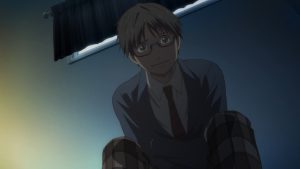 Any fan of Hoozuki no Reitetsu (ironically) knows Tanezaki-san can play the sharp-tongued tough girl to any extreme you’d like, and Hoozuki Satowa leaves no doubt that she’s a formidable customer. Her act when she thinks there might be female sempai in the club totally fools Takezou, and is quickly shed when it’s no longer deemed necessary. What I liked about Satowa’s introduction is that, tactless as it was, she was totally honest and up-front about what her goals where. And from her perspective, Takezou and the club win big too just by having her around (as indeed, they do). I also think it said something notable about her that she put the tattered “Aim for nationals!” sign back up after seeing what it meant to Takezou.
Any fan of Hoozuki no Reitetsu (ironically) knows Tanezaki-san can play the sharp-tongued tough girl to any extreme you’d like, and Hoozuki Satowa leaves no doubt that she’s a formidable customer. Her act when she thinks there might be female sempai in the club totally fools Takezou, and is quickly shed when it’s no longer deemed necessary. What I liked about Satowa’s introduction is that, tactless as it was, she was totally honest and up-front about what her goals where. And from her perspective, Takezou and the club win big too just by having her around (as indeed, they do). I also think it said something notable about her that she put the tattered “Aim for nationals!” sign back up after seeing what it meant to Takezou.
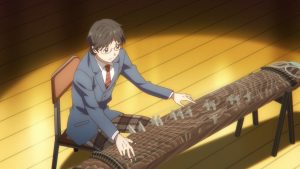 A dynamic is already emerging here – Takezou is the kaichou but lacking in confidence, and his two subordinates are a professional-level koto player and a boy far tougher and more decisive than he (and also more experienced on the koto, in fact). How does he stay relevant in such a situation? Satowa and Kudou-kun also immediately butt heads, unsurprisingly, both being as strong-willed as they are. There’s also a larger theme of what it means to be an artist coming through, and it’s an important one with this series. Where does the line between ambition and ability lie, and how much does each contribute to achieving artistic greatness?
A dynamic is already emerging here – Takezou is the kaichou but lacking in confidence, and his two subordinates are a professional-level koto player and a boy far tougher and more decisive than he (and also more experienced on the koto, in fact). How does he stay relevant in such a situation? Satowa and Kudou-kun also immediately butt heads, unsurprisingly, both being as strong-willed as they are. There’s also a larger theme of what it means to be an artist coming through, and it’s an important one with this series. Where does the line between ambition and ability lie, and how much does each contribute to achieving artistic greatness?
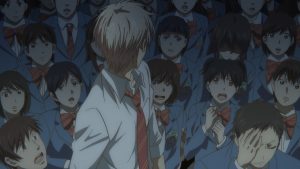 Once more we see it’s Chika who acts to save the club, this time begging the principal to have the damaged kotos repaired. When does he do this? Immediately after hearing Satowa play (which I hope will please the complainers). While this could have been deflating – and indeed, he does quake at the yawning gulf between his skills and hers – ultimately for Chika that moment was about the potential it represented for the club. He knows virtuosity on the koto when he hears it, and knows what it could mean for the club – the doors it could open. He acts on his own and in secret but nonetheless, he acts. And Satowa sees herself as being the one to drag the club to first place at the nationals, so in her mind she’s a solo act too. But that’s not how clubs work, and it’s not how performance groups work either, which is a lesson both will have to learn if they’re going to grow both as people and as performers.
Once more we see it’s Chika who acts to save the club, this time begging the principal to have the damaged kotos repaired. When does he do this? Immediately after hearing Satowa play (which I hope will please the complainers). While this could have been deflating – and indeed, he does quake at the yawning gulf between his skills and hers – ultimately for Chika that moment was about the potential it represented for the club. He knows virtuosity on the koto when he hears it, and knows what it could mean for the club – the doors it could open. He acts on his own and in secret but nonetheless, he acts. And Satowa sees herself as being the one to drag the club to first place at the nationals, so in her mind she’s a solo act too. But that’s not how clubs work, and it’s not how performance groups work either, which is a lesson both will have to learn if they’re going to grow both as people and as performers.


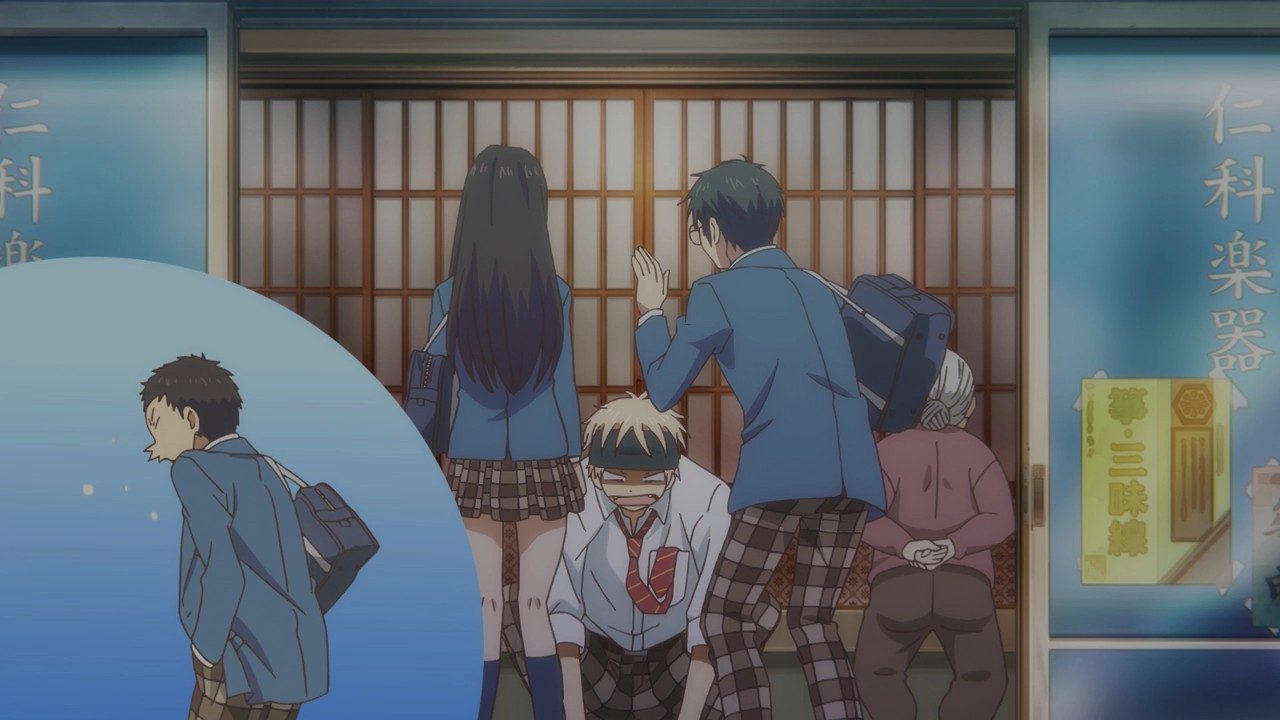

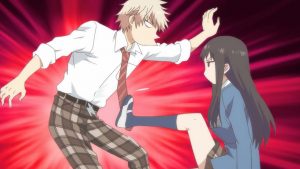

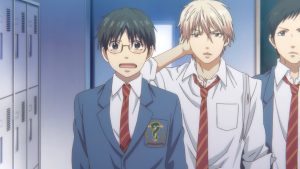
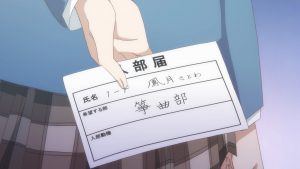

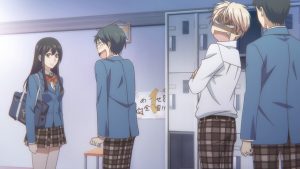


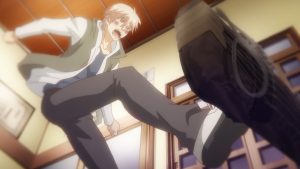
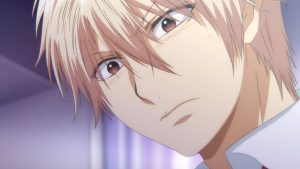

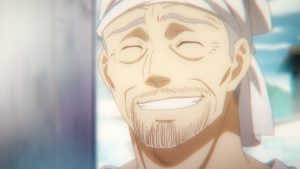
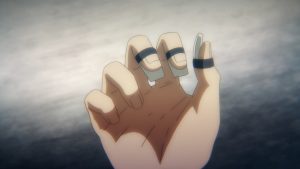
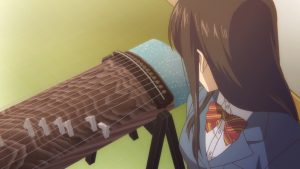
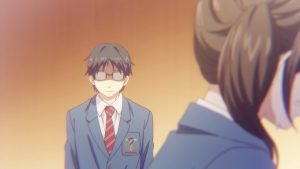
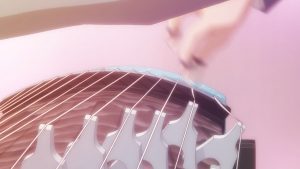

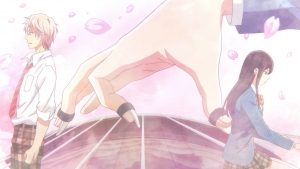



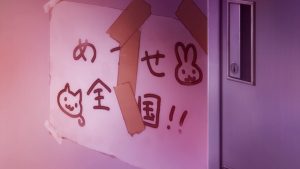
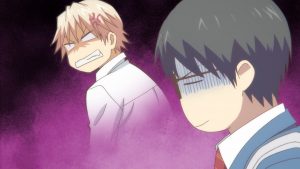

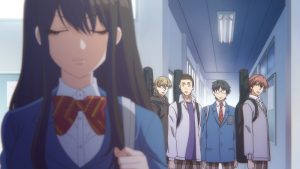
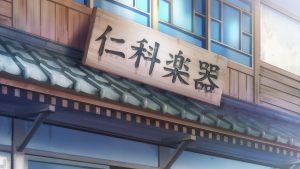
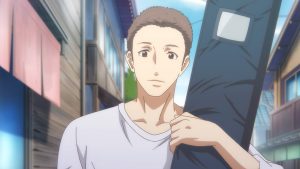
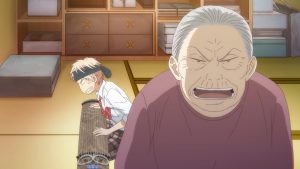
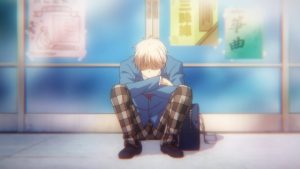
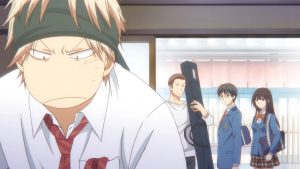



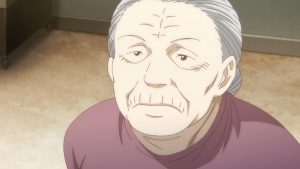
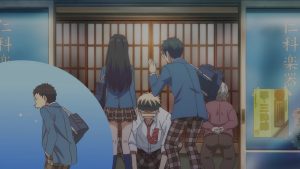


Gracie
April 15, 2019 at 9:39 amI’ve been binge-reading the manga and I was wondering at what point / chapter are you noticing this shift you’ve been mentioning in your reviews. I’m on chapter 32 and the thing it’s still on-going. Can’t imagine the arc they’re currently on to last for 40+ more chapters.
Guardian Enzo
April 15, 2019 at 10:26 amTo me it’s less a specific point and more a gradual shift. I’m about 73 chapters in and it’s certainly obvious to me by then.
Ronbb
April 15, 2019 at 2:28 pmI like the addition of Satowa as the main cast, and how refreshing…! I’m seeing growth in the character department…nice!